Periodization is varying training variables over time, such as volume and intensity. Non-periodized training would be doing the same sets, reps, and intensity every week for long periods of time. While beginners can progress like this, you’ll typically need to add in some sort of change with time in order to see results. We know that volume is one of the most important factors that impacts muscle growth and strength over time, so increasing volume needs to be a priority with training. With the same set and rep range, your weight can only increase so much, therefore you’ll need to add some periodization to your training in order to improve.
In this blog, we’ll break down the fundamentals of periodization training and explore its applications across various sports and fitness pursuits.
What Is Periodization Training?
Periodization training is a systematic approach to structuring workout routines that aims to optimize performance and prevent overtraining. It involves dividing your training into specific periods or cycles, each with its own focus and intensity level.
Phases Within Periodization
Macrocycles
This is the overall long-term view and the largest cycle in your training. This is a season of training in its entirety, at a macro level. It could be a full year in length and contains your smaller cycles of training.
Mesocycles
Now, let’s zoom in a bit. Welcome to the mesocycle, the intermediate stage where you’ll be fine-tuning your game plan. This typically focuses on a specific training goal with the length of a mesocycle depending on how you structure your program. Traditionally, these could be anywhere from three weeks to eight weeks in length, but it really depends on your programming.
Microcycles
The microcycle—where the devil is in the details. A microcycle is your smallest training cycle, typically around a week in length, where you have your focused programming for the cycle.
3 Common Periodization Training Models
The foundation of every solid training program is progressive overload. Every program needs to have a continual addition of stress over time in order for adaptation to occur. While there are many types of periodization, three are most commonly used.
Linear Periodization
With linear periodization, training intensity gradually increases over time, challenging the body to adapt and improve, while volume actually decreases. So the program begins with a phase that includes higher rep ranges and volume, and over time the program moves into lower rep ranges and higher intensities.
Example of Linear Periodization
-Hypertrophy Phase: The initial phase often focuses on higher rep ranges and lower weights to promote muscle growth and endurance.
-Strength Phase: As the training cycle progresses, the emphasis shifts towards lifting heavier weights with lower repetitions to develop maximal strength.
-Power Phase: In the final phase, the focus is on converting strength gains into explosive power, involving exercises that combine speed and resistance.
In this model, intensity goes up over time and volume goes down.
Benefits of linear periodization
Linear periodization includes a clear structure with dedicated time to a specific adaptation. The use of this type of programming establishes an initial base of fitness with the beginning phases being more hypertrophy based, and allows for gradual adaptation to stress. The linear model allows for clear progress measurement and due to the hypertrophy work in the beginning, it’s well-suited for beginners but it’s also effective for many competitive sports and athletes.
Drawbacks of linear periodization
Linear periodization can seem like there is limited opportunity for variety within a mesocycle, causing potential stagnation due to this type of training not feeling as “exciting” to lifters. Athletes could experience reduced motivation over time and linear training may not be as beneficial as another model where the mesocycles change at another cadence (like weekly or daily undulating periodization). Overall, it’s tried and true and it works if you’re willing to progress in a linear fashion with your lifts over time. It’s also great for beginners and advanced athletes alike.
An example of linear periodization can be found in our STRONGER program, a 12 week, 4 day/week program that include optional mobility days and linear periodization with three 28 day phases.
Daily Undulating Periodization (DUP)
The DUP program, where every day is a new adventure, varies sets, phases, or reps daily throughout the week.
For example, Monday could have a hypertrophy focus with higher rep ranges, Wednesday could have a power focus with explosive movements and lower rep ranges, and Friday could have a strength focus with mid-range reps and a strength focus. Another example of DUP programming could be undulating your reps as 15/10/5 or even 5/3/1. The goals of training (hyp/str/pwr) don’t neccessarily need to change, but the rep ranges do in this example. 5/3/1 is a strength and power only example with no focus on hypertrophy, but it’s still considered DUP because you are undulating reps during a week microcycle.
Now when you define it this way, you realize there are actually endless ways to program this concept.
A 2016 study compared the order of rep ranges and hyp/str/pwr focus between powerlifters and found some interesting results that suggest order of programming can impact achievable volume due to fatigue levels and recovery between sessions.
The goal with training is to maximize volume but manage fatigue while building muscle and strength, so adjusting according to recovery is important when programming.
Benefits of DUP programming
DUP programming can be tailored to the individual and allow greater flexibility in training overall. It has potential to improve motivation and excitement around training due to the changing variables each session. The dymamic nature of DUP can help prevent plateaus as well. It’s important with DUP to use auto regulation or other fatigue management tactics when training. Considering a person’s recovery and readiness for training that day can help to avoid overtraining.
Drawbacks of DUP programming
DUP can be more complex when creating a program and progress can be a bit more difficult to track weekly as progression won’t be linear, necessarily. With DUP it’s more important to “trust the process” as you’ll be changing things frequently.
Block Periodization
Block periodization involves focused training blocks, typically with an emphasis on sports specific training. Each block’s goal is a different adaptation to improve sport.
Example of block training:
Accumulation phase: lower intensity and higher volume – build a general foundation
Transmutation phase: transition to more sports specific training
Realization blocks: training is at peak intensity, optimize performance for competition
Block periodization is based on specificity of training for a specific sport and each block builds on the last.
Benefits of block periodization
Block periodization is an effective way to improve cardio endurance, muscular strength and speed all at different times, using a specific focus toward the sport versus trying to improve everything all at once. It allows for very specific seasonality of sport or competition, allowing athletes to progress their training, recover between blocks, and build to game season.
Drawbacks of block periodization
Block training is more seasonal and sport specific, so general training athletes or enthusiasts wouldn’t necessarily need to use this unless they are training for a sport, but it can be used by anyone. Unless you have defined seasons for defined performance like practice versus game seasons, it could be hard to stay on track for this type of periodization as an average gym enthusiast.
The Benefits Of Periodization
Here are five key benefits of incorporating periodization into your training regimen:
- Enhanced Performance: By strategically varying your workouts and focusing on different aspects of fitness, such as strength, endurance, and power, periodization helps you optimize your performance and reach new heights in your athletic endeavors.
- Reduced Risk of Overtraining: One of the biggest pitfalls of traditional training programs is the risk of overtraining, which can lead to burnout and injury. Periodization mitigates this risk by incorporating planned rest periods and deload weeks, allowing your body to recover and adapt to the demands of training.
- Prevention of Plateaus: Ever feel like your progress has hit a plateau? Periodization keeps your body guessing by constantly challenging it with new stimuli. By cycling through different phases of training, you’ll continue to make gains and avoid hitting a plateau in your training.
- Improved Recovery: Recovery is a crucial component of any training program, and periodization prioritizes it by incorporating rest days, active recovery sessions, and deload weeks. This allows your muscles to repair and rebuild stronger than before, reducing the risk of injury and improving overall performance.
- Increased Motivation and Adherence: Let’s face it—doing the same workout day in and day out can get boring. Periodization adds variety and excitement to your training routine, keeping you motivated and engaged. Plus, the structured nature of periodization helps you stay on track and stick to your fitness goals in the long run.
How To Incorporate Periodization
So how do you take these concepts and apply them to your program? A solid program applies science-backed concepts while also basing everything on the individual lifter; taking into account not only the ideal program, but the lifter and their recovery, experience, volume needs, and more.
One thing to remember is that these training principles are not mutually exclusive. A combination of these concepts can be applied in programming. There is no ONE way to program or periodize. These are just concepts to use when building programs around individual athletes.
- Set Specific Goals: Start by defining clear, measurable goals at a macro level and then narrow for each phase of your training. Whether you’re aiming to build strength, increase endurance, or improve overall fitness, having specific objectives will guide your planning. Knowing the lifter’s specific limitations and weak points will help focus programing within each mesocycle.
- Listen to Your Body (or Know Your Athlete): Pay attention to how your body responds to different types of training and adjust your workouts accordingly. Or if you’re coaching, understand the way your athlete responds. Ask questions about their training and recovery and know when to adjust and scale back or add more. If you’re the one training and you’re feeling fatigued or experiencing signs of overtraining, don’t hesitate to dial back the intensity or take an extra rest day. Remember, rest and recovery are just as important as the workouts themselves.
- Stay Consistent: Consistency is key to seeing results with any programming. When programming is tailored to the athlete, backed with scientific principles, and followed clearly while using auto regulation and recovery monitoring, success is inevitable.
Learn More About Periodization
Listen to our podcast episode where we discuss Periodization and how to apply it to your training.
Applying Periodization to Your Training: Hire a Coach
The reality is that a well thought out program is essential for results, but doing this all on your own can seem overwhelming. Hiring a coach who understands these principals and how to apply them is going to bring you to the next level and allow you to hit your goals. If you’re interested in working with one of our experienced, qualified coaches online or in person, reach out and schedule a free consult call to discuss your goals.
Fill out an interest form



